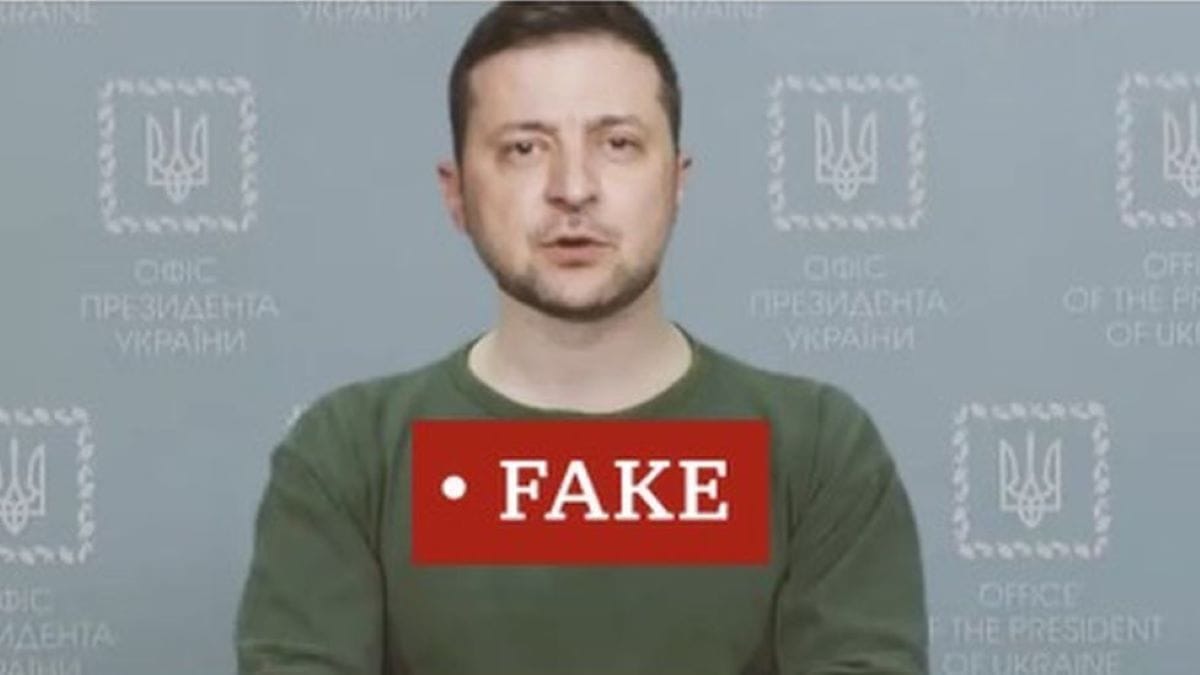As technology gets better, people are concerned more on how it might be used in bad ways. One big concern is deepfake videos. These are recordings that see genuine but are made up or changed using computer tricks.
They can be used to lie, harm someone’s reputation, or indeed mess with elections. Since deepfakes can cause a lot of harm, individuals are talking about ways to use it sensibly. In this blog post, we’ll talk about what deepfakes are, why they’re a issue, and what we can do to keep them from causing too much problem.

Overview of video deepfakes and their developing prevalence
As technology keeps getting way better and quicker, we’re seeing more and more deepfake recordings popping up. These recordings are made utilizing fancy computer tricks that can make them see super genuine.
Deepfakes appear individuals saying or doing stuff they never really did.
These fake recordings can cause enormous issues. They can spread lies and fake news, demolish someone’s reputation, or indeed mess with what individuals think about certain issues.
That’s why it’s vital for everybody to think around the morals of deepfakes and discover ways to halt them from causing harm.
In this blog post, we’ll dig into the world of deepfake recordings, talking about why they’re getting so common, how they can mess things up, and why it’s vital to handle them responsibly.
Understanding the moral implications of video deepfakes
It’s super critical to think about the morals of deepfake recordings in today’s computerized world. With innovation getting fancier, individuals can utilize AI to make video recordings that see genuine but aren’t. These fake recordings can trap individuals, spread lies, and cause a lot of harm.
One big concern is how deepfakes can spread fake news. They can make it appear like somebody did or said something they never really did, which can mess with what individuals believe. This is particularly concerning when it comes to important stuff like politics and news.
Privacy is also a big concern. Deepfakes can put people’s faces and voices into all sorts of humiliating or terrible circumstances without their authorization. This can truly harm someone’s reputation and make them feel awful. And there’s the hazard of utilizing deepfakes to do cruel stuff like cyberbullying or blackmail.
This technology can be utilized to make harmful contents that harms genuine people. To handle deepfakes wisely, we all need to understand how they can impact individuals and put rules in place to protect against causing any harm.
By spreading awareness, utilizing deepfake tech wisely, and following moral rules, we can ensure that it is utilized in a reasonable way, and respects people’s rights.
The potential impact of video deepfakes on society
The thought of video deepfakes causing issues in our world nowadays is a big issue. As technology is getting refined, it’s becoming easier for individuals to make fake videos that looks genuine. This brings up a few genuine questions around what’s right and wrong.
One big issue is that these fake recordings can spread lies and make individuals question about what they see and listen online. They can trick us into accepting things that never truly happened, which can mess with our trust in news and other information.
Also, it’s difficult to tell what’s genuine and what’s not any longer. With deepfakes, even recordings that appear legit might be completely made up. This makes it difficult for things like the law and news reporting, where having accurate evidence is super important.
And there’s the chance of utilizing deepfakes to do cruel stuff, like making fake explicit videos of individuals without their authorization or changing what politicians say to influence how we vote.
To deal with all these issues, we need to talk about it, make rules to stop unlawful stuff from happening, and educate individuals how to be smart about what they see online. Only by working together and being cautious can we stop deepfakes from causing too much problem in our world.
Safeguards and regulations to mitigate the dangers of video deepfakes
As video deepfake tech gets better, we need to ensure that we have rules and right tools in place to stop them from causing harm. One important tool is having solid ways to check if a video is genuine or fake.
Rules are also important. Governments and groups in charge can make laws that punish individuals who make and share bad deepfakes. And companies that run websites and social media can make rules to stop bad deepfakes from spreading.
We can also use advanced tools to help find and flag fake videos. This implies working together with tech specialists and individuals who make rules to stay on top of the deepfake situation.
Moreover, it’s crucial to educate individuals about deepfakes and why they’re perilous. By helping folks understand what deepfakes are and how to tell if a video is fake, we can all be smarter about what we see online.
So, to handle the issue of deepfakes, we require to utilize a blend of modern tech, rules, and educating individuals to be cautious. That way, we can make sure deepfakes don’t cause too much trouble.
The role of technology in identifying and combating video deepfakes
Technology is super important in battling against fake videos called deepfakes. These recordings are made using fancy computer tricks, but we have cool tools to capture them.
One tool is deepfake detection algorithms. They see the video and spot things that appear abnormal or off-base, which might mean the video is fake. These algorithms learn from lots of videos to get better at finding fakes.
Blockchain is another cool tech that makes a difference. It keeps a record of where a video came from and what happened to it. This makes it difficult for individuals to alter videos without anybody noticing.
There’s also stuff like digital watermarking, which adds special codes to recordings to prove they’re genuine. This stops individuals from messing with recordings without permission. So, in spite of the fact that technology makes it simple to make fake videos, we’ve got amazing tools to capture them and keep videos real.
Legal considerations and responsibilities surrounding video
When we discuss about making and sharing deepfake videos, we’ve got to think about the rules and what’s right and wrong. As technology keeps getting better, the laws are still trying to catch up.
One big rule is about getting permission. If you use someone’s face or voice in a deepfake without permission, it’s not okay. This can lead to legal problems, like being sued for attacking someone’s privacy or lying about them.
Also, you’ve got to think about who owns the stuff you’re utilizing. If you utilize music or videos that belongs to somebody else without consent, you might get in to problem for breaking the copyright laws. It’s vital to understand when it’s okay to use the stuff and when it’s not.
Besides the legal stuff, there’s also a responsibility to be honest. Individuals require to know when they’re watching something fake. Trickery and spreading lies can truly harm people and make it difficult for others to trust what they see. So, when it comes to making and sharing deepfake videos, it’s vital to follow the rules and be honest. That way, we can utilize this technology in a way that’s reasonable and respectful to everyone.
Moral dilemmas in the creation and distribution of video deepfakes
As technology gets fancier, we must think hard about the issues caused by fake videos called deepfakes. These videos are so realistic that it’s difficult to make out what’s genuine and what’s fake. This can lead to spreading lies, attacking people’s privacy, and hurting everyone.
One big problem is that bad people might use deepfakes to trick or manipulate others. They may spread fake news, destroy someone’s reputation, or even cause violence.
Privacy is also a big concern. Deepfake tech raises questions about whether it’s okay to make and share videos of individuals without having their consent. This can make individuals feel abused and taken advantage of.
To deal with these issues, we need to put rules and regulations in place. This could mean teaching people how to spot fake videos, making sure our online systems are secure, and having clear laws about making and spreading deepfakes.
By facing up to the issues caused by deepfakes and putting appropriate measures to stop them, we can utilize this technology in a way that’s secure and reasonable for everyone.
Steps people can take to safeguard themselves from falling victim to video deepfakes
In today’s high-tech world, it’s super important to secure yourself from dubious videos called deepfakes. Here are a few simple steps you can take to keep yourself safe:
- Learn about Deepfakes: Knowing about deepfakes and how they can trick you is the first step. Understanding how they’re made and spread can help you know what’s genuine and what’s fake.
- Check Your Sources: If a video appears odd or difficult to trust, it’s smart to check where it came from. Looking at trusted websites or fact-checking sites can help you figure out if it’s genuine or not.
- Ask Questions: Do not accept everything that you see online. It’s great to inquire yourself if a video makes sense and if it looks right. Some of the time, deepfakes can be spotted by paying attention to small details.
- Stick to Safe Platforms: Using websites and apps that take your privacy seriously can lower your chances of seeing deepfakes. Choosing trusted platforms can help you avoid getting tricked.
- Make Your Accounts Secure: Adding additional layers of security to your online accounts, like using two-factor authentication, can stop bad guys from getting in and messing with your stuff. By doing these basic things and remaining mindful of what’s going on with deepfakes, you can keep yourself secure and make smart choices online.
To learn more about deepfakes and its types, please read
Conclusion
Promoting moral standards and responsible use of technology in the age of video deepfakes
In wrapping up, it’s super important to stick to moral rules and use technology wisely, particularly when it comes to video deepfakes. If we do not, the impacts can be enormous and influence everyone.
To stop deepfakes from causing trouble, tech experts, lawmakers, and everybody else need to team up. We’ve got to set clear rules about making and sharing deepfakes, like being honest about how they’re made and getting consent before using someone’s face.
It’s also important to teach people how to spot fake stuff online. By helping people learn to think critically and question what they see, we can stop the spread of lies made by deepfakes. By focusing on doing what’s right and using technology responsibly, we can enjoy the good things deepfake tech offers while making sure it doesn’t cause harm in our computerized world.
What we learned
In this blog post, we’ve talked about deepfake videos and how they can cause problems. We’ve looked at the reasons why they’re a big deal and what we can do to stop them from causing harm.
As technology gets better, it’s up to all of us to be cautious and make smart choices. By learning about deepfakes and taking steps to protect ourselves, we can make sure that the internet remains a secure and dependable place.
Let’s keep talking around these issues and working together to make sure that technology is used for good in our world.


Leave a Reply